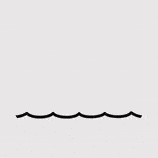The tricks performed by the surfers amaze us. But little do we know that below the surface lies a raft of science, which is as impressive as the art itself. Be it professionals or just hobbyists, surfing as a sport is enjoyed by people from almost all walks of life, across the planet. You just need an ocean, a board, waves, and a lot of enthusiasm.
Let’s start and understand the Anatomy of a Surf Wave
Waves are formed in many ways, but mostly they are created by the wind blowing over the surface. Subject to the speed of the wind, energy is transferred from the wind to the water. Waves hide many such secrets, and this article would uncover some of it.
1. How do waves break?
Waves travel through deep water without obstacles and then head to the shore with a massive force. When they reach shallow water, they often slow down, and hence the crest starts to grow higher. Whenever a wave hits an obstacle, the lower part slows down, whereas the upper part continues to move. and that’s where surfers are interested in. The breaking of the wave depends on the seabed i.e. the steeper the seabed, the more plunge the waves. When the transition on the seabed is light and smooth, the waves are gentler, which is any beginner’s paradise.
2. Types of Waves
You would hear this a lot from surfers. Depending on the direction in which a wave often breaks, it forms left-hand and right-hand waves (as seen from the surfer’s standpoint). Now, some waves peel in both directions starting from the same point and are called A-frame waves. There are few waves that do not break at all or break all at once, or they are too fast to be surfed. Those are called close-out waves and are usually unsurfable.
Reading a wave accurately is the most important part of successful surfing and is considered an art. In your journey from a beginner to a pro surfer, your ability to read the waves will improve. It comes by spending hours in the ocean and practicing in all the different conditions available.
3. Different parts of the Wave
In order to read a wave thoroughly, you should be able to identify and decipher its various parts. This would also make it easier for you to communicate with other surfers and to understand your coach/mentor if you’ve started out surfing in the water.
Peak: It is the highest point of a wave and often the first to break. Spotting the peak is the key to predict how a wave will break.
Lip: This is the topmost part of the wave that goes up. In the lip, you would find most of the wave’s strength.
Shoulder/face of the wave: This is the part of the wave which is yet to break, and where surfers usually ride.
Curl: Curls are located in the wave’s shoulder. It is the concave part and often very steep. This is for advanced surfers because it needs a lot of practice and high-performance manoeuvres/tricks.
Tube: In some of the cases, the wave also forms a cylindrical shape when it breaks. This is the place where pro surfers can try their ultimate surfing manoeuvres. It is also called a barrel.
Impact zone: Now, this is the spot where the lip crashes as the wave breaks. It is advisable to avoid getting caught in this zone even if paddling out because this is where the wave has its all power.
White water: After the wave breaks and reaches the land, it is known as whitewater or foam.
Now that you understand the fundamentals, you may see some videos to further clear your mind till the time it is safe to go into the waters. And once it’s time to enjoy some surfing action, the first step is to find a good surf resort somewhere calm and allows all the actions.




